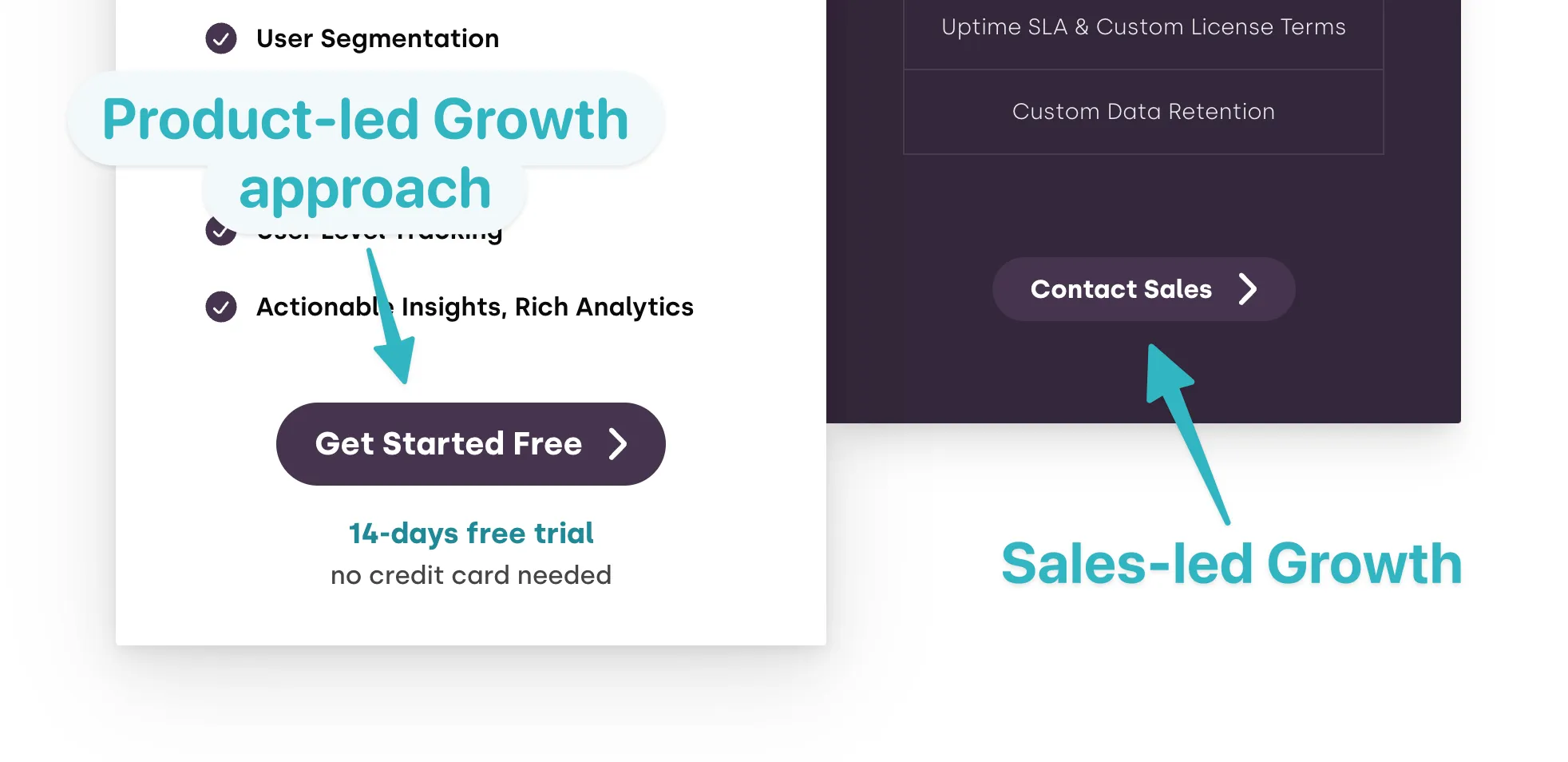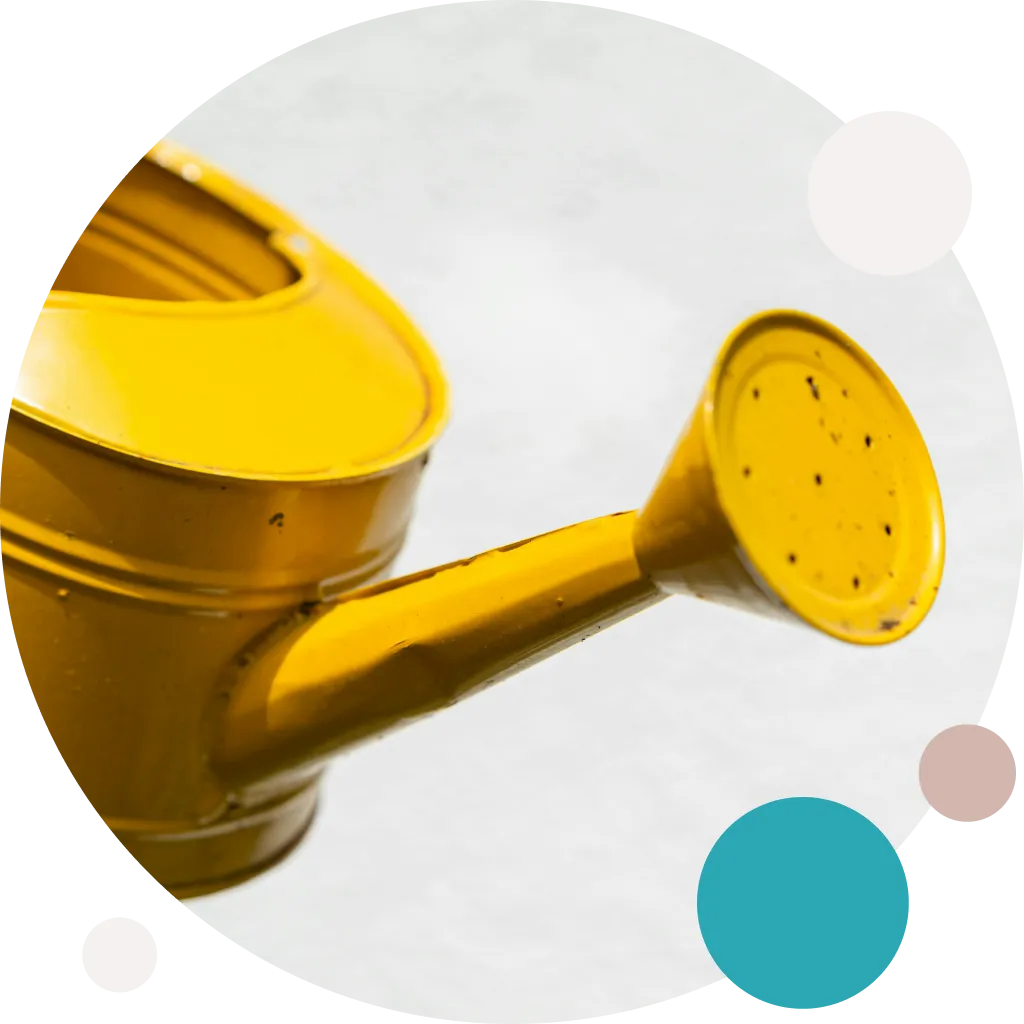What if the key to skyrocketing your business is right in front of you?
You already have a great product. But how will you get your clients? How can you convert interested visitors into paid users?
Choosing the right growth strategy can put your company on a growth trajectory.
Product-led growth (PLG) and sales-led growth (SLG) are two popular approaches. Understanding their differences can help you make the best decision for your business.
What is Product-Led Growth?
Product-led growth focuses on the product as the main driver of customer acquisition and retention.
Users experience the value of the product directly, often through free trials or freemium models. This hands-on approach helps them realize the product’s benefits before making a purchase decision. There is no “contact sales” entry barrier: your visitors can sign up, and learn about your product at their own pace.
If you provide the right information and motivation to make a sale, eventually they’ll sign up without needing a salesperson to guide them.
This self-service model is highly scalable and cost-effective.
What is Sales-Led Growth?
Sales-led growth relies on a dedicated sales team to drive customer acquisition and retention.
In this model, sales representatives actively reach out to potential customers, offering demos and personalized pitches. This approach is typically used for high-ticket items where a personalized touch can significantly impact the buying decision.
While SLG can be effective, it often requires a substantial investment in hiring and training sales teams. Additionally, the sales cycle can be longer, as it depends heavily on human interaction and relationship building.
Advantages of Product-Led Growth
- Cost-Effective Scaling: PLG allows for rapid scaling without the need for a large sales team.
- Customer-Centric: Users can explore the product at their own pace, leading to a more personalized experience.
- Data-Driven Decisions: With tools like Bonboarding, companies can gather insights into user behavior and optimize the onboarding process.
Advantages of Sales-Led Growth
- Personal Touch: Sales reps can tailor their approach to each prospect, addressing specific needs and concerns.
- Complex Sales: For products that require a deep understanding or customization, a sales-led approach can be more effective.
- Relationship Building: Sales teams can build long-term relationships with customers, fostering loyalty and trust.
Choosing the Right Strategy
Your choice between PLG and SLG should depend on your product, market, and resources.
For companies with straightforward, user-friendly products, PLG is usually the path to choose.
If you can quickly demonstrate the value of your product (by setting up a straightforward user onboarding), you will have to potential to reach and convert more customers than with SLG.
Bonboarding helps businesses to create stunning product tours that highlight the value of their product effortlessly. And you can add it to your new or already existing product without any coding.
Guided product walkthroughs enhance user engagement, and also drive adoption and retention.
On the other hand, if your product is complex or high-value, an SLG approach might be more appropriate.
The personal interaction and tailored solutions provided by a dedicated sales team can be invaluable in these scenarios. Reaching and convincing decision-makers on higher levels might require a personal relationship.
Combining Both Strategies
Many successful companies use a hybrid approach, leveraging the strengths of both PLG and SLG.
They use product-led techniques to attract and engage users initially, and then employ a sales team to close deals and build relationships.
We at Bonboarding also use this combination: we provide a self-serve sign-up flow but also cater to enterprise users with personalized offers.
Just see how we do it on our pricing page:

Conclusion
Both product-led growth and sales-led growth have their merits.
Understanding their differences and how they apply to your business can drastically improve your conversion rates.
With tools like Bonboarding, you can enhance your PLG strategy by creating engaging, informative product tours that showcase your product’s value.
Whether you choose PLG, SLG, or a combination of both, the ultimate goal is to drive growth and ensure customer satisfaction.

